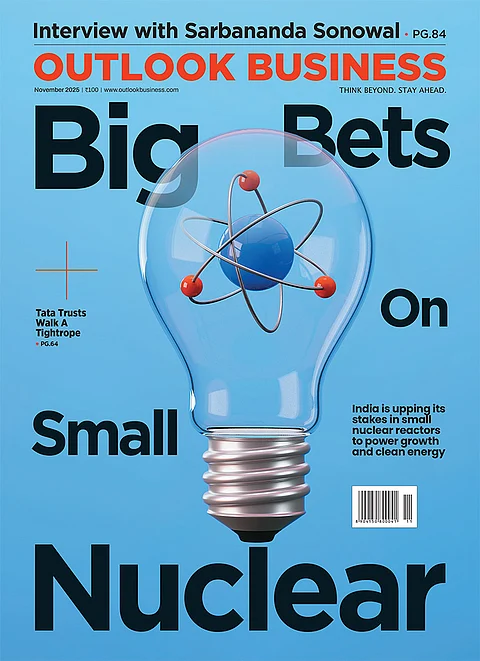A new financial instrument, which has been introduced in the Indian market after a long wait, is catching the fancy of the investor community. It is expected to dramatically change the complexion of the infrastructure landscape for the asset owners as well as bankers alike. Any change comes with much circumspection and therefore has to be marketed with much fanfare to make headway. So far, so good.
The concept
InvIT (Investment Trusts) are infrastructure assets bundled into units that can be subscribed to by investors just like the units of any mutual fund. The only difference is that underlying the former are hard assets while in the case of the latter, they are mostly shares of listed companies. It’s funny that in this case, nakal mein akal nahi lagi. The concept has presumably been ‘borrowed’ from REIT (Real Estate Investment Trust) where the underlying — rented-out properties — generate the return that unit holders get. In case of InvIT, if the “Inv” stands for investment, then what does the ‘I’ stand for? Perhaps the name should have been InfIT (Infrastructure Investment Trust).
The conversation
Since it’s a new concept, I requested one of the lead managers to the issue help me understand the product better since the prospectus is almost 900 pages and a hard-copy is impossible to get by these days (even with lead managers). I was thankful they sent a director level person. After the initial spiel of the pioneering uniqueness of the offering (which I had to cut-short since it was all irrelevant), the conversation went something like this:
Me: Why is the money being raised?
Response: Sir, the InvIT shall use the money to retire independent senior and sponsor subordinate debt in project SPVs.
Me: So basically it’s refinancing…
Response: No sir, securitisation...
Me (in my head): I don’t agree but will let it pass.
Me: Ok, so what is the nature of the instrument that I am investing in — equity or debt?
Response: Sir, you shall get the return in the form of interest, dividend and buyback.
Me: Ok, so the indicative return is x%, out of this how much would be contributed in the form of dividend and interest?
Response: Sir initially, it would be in the form of interest and then later dividends would accrue.
Me: So approximately, how much interest would be paid out to me in the first year?
Response: It depends on toll collection, sir. But I would not have the break-up or timeline.
Me (in my head): How enlightening!
Me: If that be so, what proportion of the units that I receive will be equity-equivalent (on which I shall get dividend) and what proportion shall be debt-equivalent (on which I shall get interest)?
Response: Blank face
Me (to make it easier for him to answer my query): In your note, you have stated the projected Profit/Loss Account and the cash flows of the InvIT. What about the balance sheet? What appears on the liabilities side of InvIT’s balance sheet?
Response: Sir, how can the Balance Sheet be made? But sir, it has been rated AAA and it can raise another ₹1,000 crore without the rating being affected.
Me: In the projected Profit/Loss statement, it shows a total revenue of ₹1,000 crore and PAT of ₹250 crore, whereas in the projected cash flow statement, expenses amount to ₹2,000 crore. How is this reconciled? (I subsequently found the balance sheet in the prospectus)
Response: Sir, we will have to look at the assumptions behind those numbers.
Me: Whatever the assumption, how can they be different for P/L and cash flows?
Response: Sir, let me get the person who made this spreadsheet on a concall right away. Hello Mr A, please reconcile this for us.
Mr A: Sir, woh excel mein na ek row upar-neeche ho gayi thi… (Mr director disconnects with an unamused grin).
Me: Don’t worry, send me the revised numbers. Tell me the book value (cost) of the SPV in the parent company’s balance sheet, which shall come to the InvIT.
Response: Sir, the equity value of the InvIT assets has been ascribed at Rs.1,200 crore by this renowned independent valuer. Debt of Rs.4,800 crore shall move from parent company’s B/S at gross level since Rs.1,400 crore loan that they have given to SPV has also been borrowed from the market.
Me: I am neither asking for the detailed break-up, nor the transfer price of the asset into the B/S of InvIT, I only want to know the cost of the assets being transferred as appearing today in the B/S of the Parent company? Just a number in Rs. crore…
Response: Sir, it’s the same thing… (Gives a even more complicated answer than the original response)
Me: How will the capital be repaid to unit holders and what will be the source of the same?
Response (sheepishly): Sir that shall be done via buybacks; these people (referring to his back-end team) have done a spreadsheet on the NPV of the asset portfolio…
Me: Ok, so what are the specific risks that I should be aware of as a unit holder?
Response: Sir the usual ones, (nonchalantly) – woh MD pe murder case chal raha hai…
Decoding
At this point I threw in the towel and decided to go through the arduous prospectus myself along with my team, admittedly without a toothcomb (and I confess I may have missed a few things). Here is what I gathered...
This is the first of a two-part series, you can read part two here. The writer is CIO, Renaissance Group











